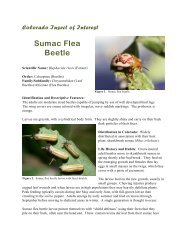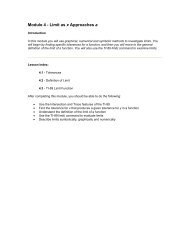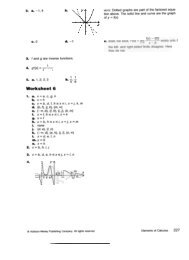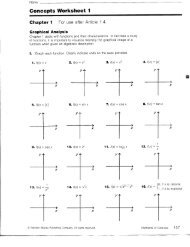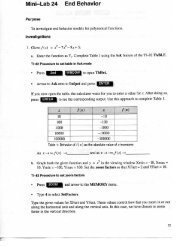The van Hiele Model of the Development of Geometric Thought
The van Hiele Model of the Development of Geometric Thought
The van Hiele Model of the Development of Geometric Thought
Create successful ePaper yourself
Turn your PDF publications into a flip-book with our unique Google optimized e-Paper software.
14 LEARNING AM3 TEACHING GEOMETRY, K-12<br />
sciously what might o<strong>the</strong>rwise be vague and undeveloped ideas. It can also<br />
serve to reveal immature or misconceived ideas. Initially, children should<br />
be encouraged to express <strong>the</strong>ir geometric understandings in <strong>the</strong>ir own<br />
terms-"corner" for angle, "sianty" for <strong>the</strong> sides uf a ?ar&elogram,<br />
"straight" for parallel lines. Gradually, however, children should be intro-<br />
duced to standard terminology and encouraged to use it precisely. Just<br />
because children are using a word does not mean <strong>the</strong>y attach <strong>the</strong> same<br />
meaning to it as <strong>the</strong>ir listener. For example, some children say that L<br />
is a right angle but that A is a left angle. Some say this shape<br />
( ) is a square but when turned 45 degrees ( 0 ), it no longer<br />
is one. In each example, children have incorrectly focused on orientation as<br />
a determining characteristic. (Perhaps <strong>the</strong>y were shown figures only in<br />
"standard" position.) <strong>The</strong>y are interpreting <strong>the</strong> terms right angle and square<br />
to have a narrow meaning. Children who operate with notions like <strong>the</strong>se<br />
are limiting <strong>the</strong>ir development. Through conversations, teachers can un-<br />
cover misconceptions and incomplete notions as well as build on correct<br />
perceptions.<br />
<strong>The</strong> teacher's qse <strong>of</strong> language is also important. For example, in work on<br />
level 1, terms such as all, some, always, newl; sometimes should be modeled<br />
and encouraged. Level-2 phrases include "it foilows that . . ." and "if. . .,<br />
<strong>the</strong>n. . . ." Level 3 would use and stress <strong>the</strong> meanings <strong>of</strong> ariom, postulate,<br />
<strong>the</strong>orem, converse, necessary and sufficient, and so on.<br />
Teacher questioning is a crucial factor in directing student thinking. At<br />
all levels, asking children how <strong>the</strong>y "know" is important. It is not enough,<br />
for example, for students at level 2 to be asked what is <strong>the</strong> sum <strong>of</strong> <strong>the</strong> angles<br />
<strong>of</strong> a pentagon. <strong>The</strong>y should be challenged to explain why and to think about<br />
<strong>the</strong>ir explanation--could it be shown ano<strong>the</strong>r way? "Raising appropriate<br />
questions, allowing a sufficient response-time and discussing <strong>the</strong> quality <strong>of</strong><br />
<strong>the</strong> answers are methods that take into account level <strong>of</strong> thinking" (Geddes<br />
et al. 1985, p. 242).<br />
For growth to occur, it is essential to match instruction with <strong>the</strong> student's<br />
level. Thus teachers must learn to identify students' levels <strong>of</strong> geometric<br />
thought. Because <strong>the</strong> nature <strong>of</strong> a student's geometric explanations reflects<br />
that student's level <strong>of</strong> thinking, questioning is an important assessment tool.<br />
As an example, consider responses to <strong>the</strong> questions "What type <strong>of</strong> figure is<br />
0 this? How do you know?" Students at each level are able to respond<br />
"rectangle" to <strong>the</strong> h t question. (If a student does not know how to name<br />
<strong>the</strong> figure, he or she is not at Ievel 0 for rectangles.) Examples <strong>of</strong> level-




